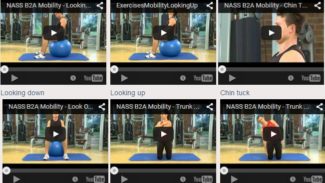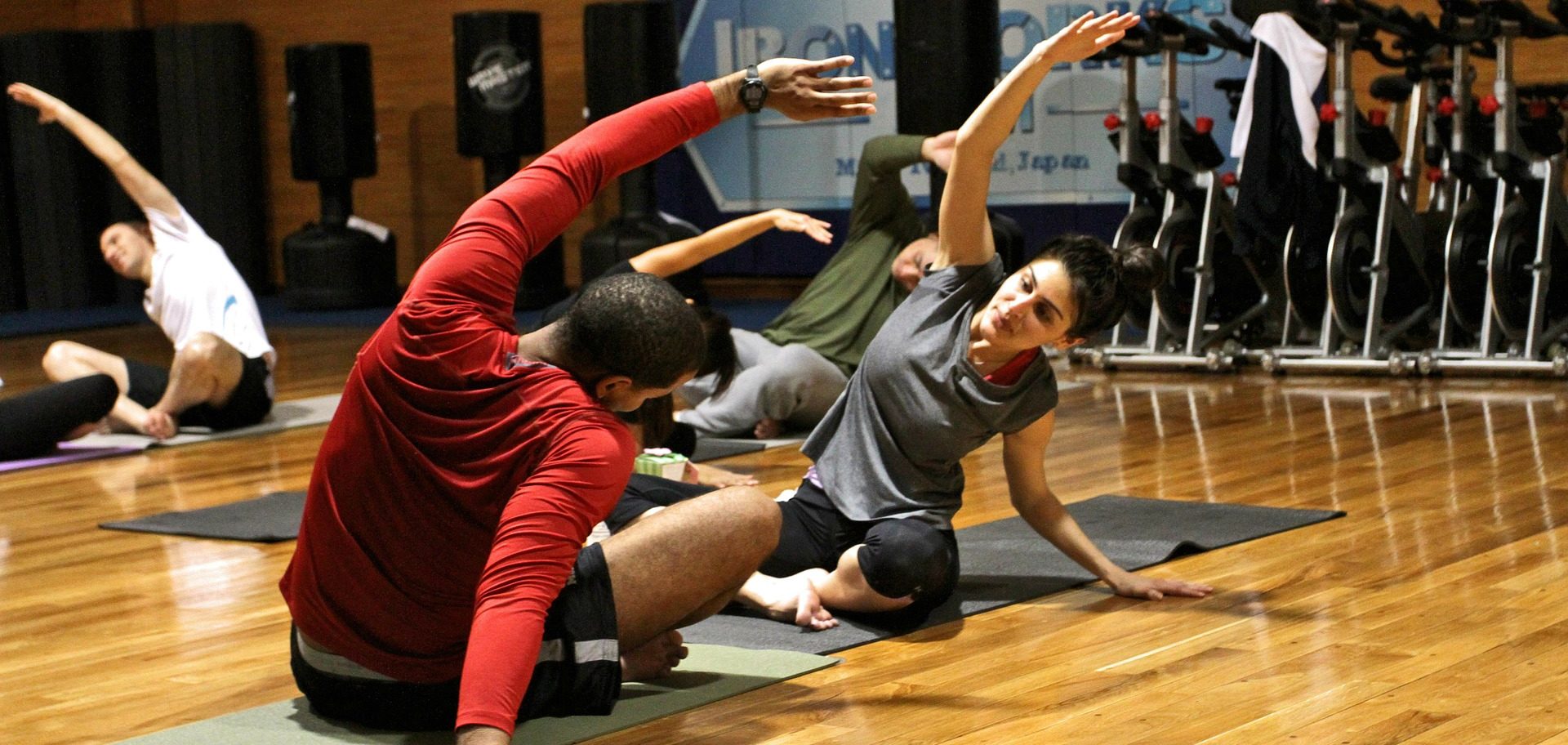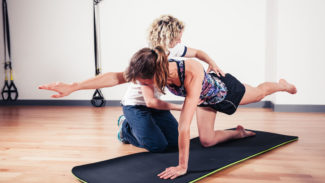
Back to Action
Discover how to exercise safely with our Back to Action guides
Read more
Choosing an exercise class to suit your needs
This information is for anyone with axial spondyloarthritis, including people with ankylosing spondylitis
Low impact classes may be better as they are less likely to lead to a flare.
Body contact in exercise might be something you would prefer to avoid.
Always start with a beginners’ class. Learning good technique from the start is essential to gain the most benefit.
Body Balance classes are low impact and combine movements from yoga, Pilates and Tai Chi. The aim of the class is to use breathing control, stretches, movements and positions to enhance your flexibility and strength.
As movements are gentle and flowing and instructors usually use light music in the background, many people find Body Balance calming. It’s a slower paced class but the continued movement mean that you burn calories and keep your joints mobile.
Body Balance will work your core stability which means it is good for your posture.
Body Pump classes are low impact. They involves performing set movements while holding weights. Classes are usually set to music and usually include squats and lunges.
You generally set the level at which you want to work which can be a great advantage as you may feel able to do more one week than another.
Circuit Training classes involve working your way around a set of exercise stations, each with a different exercise for you to perform. The exercises throughout the class cover a combination of strengthening and cardiovascular exercises. A good circuit class will ensure you have a full body workout.
You work at your own pace on each exercise.
Be aware that its easy to become competitive with fellow class mates.
There are different types of Core Stability classes on offer. They may be called Gym Ball class or Swiss Ball class. These classes tend to be low impact and focus on stability and strengthening of the muscles that support the spine. This means they can be very beneficial.
High-Intensity Interval Training (HIIT) is a workout of short bursts of movement, with small rest periods in between. The exercises can be standing or seated and can be easily adapted for people with axial SpA. The main focus is on cardiovascular exercise, strengthening muscles and moving joints.
Watch Physiotherapist Josh Poole’s HIIT session or visit the NASS Colchester Branch YouTube page for more sessions.
Pilates classes focus on core stability and postural control through exercises aimed at strengthening the muscles that support the spine.
Pilates classes are low impact, using positions of lying and sitting to teach awareness of breath control, spinal alignment and strengthening of the trunk. Pilates classes could help you to maintain and improve your strength, flexibility, mobility, balance and co-ordination and posture
Research has shown Pilates can help improve BASFI scores, is effective and safe.
There are different types of Pilates class but the two main types are:
Check with your Pilates Instructor which type might work best for you.
Watch Wiebke Reichert’s Pilates for axial SpA sessions.
Also known as Thai Boxing or Body Combat, Tae-Bo is a non-contact martial arts based fitness session. It incorporates techniques used in Thai Boxing and Taekwondo with an aerobic routine. It develops co-ordination and balance and the flexibility exercises combine to provide a high calorie workout.
Classes can vary a great deal so do check with your instructor first.
Tai chi is a Chinese martial art that is practised throughout the world, consisting of gentle, fluid movements that are relaxed and slow in their rhythm.
Research suggests that people undertaking regular Tai chi can show significant improvements in areas such as balance, flexibility, posture, muscle strength, breathing control, cardiovascular function, mental state and even disease activity.
Try Susi Mala Gaikwad’s Therapeutic Tai Chi session.
Somatics is a set of gentle, accessible movements for the whole body and is usually performed lying down. It can help relieve stiffness in joints by stretching any tight muscles around the joint.
Try Ian Young’s Somatics taster session.
Spinning is a low impact aerobic form of exercise performed on a specially designed static bike. This exercise class is normally set to music designed to motivate you and make you work hard. The class offers a very high level of aerobic workout and can burn up a lot of calories.
Spinning involves a lot of leg movements that could irritate any knee and hip pain. The class does not work all leg muscles equally so it would be important to include other forms of strengthening exercise into your weekly exercise programme.
After the class it is important that you stretch yourself out as the class will involve spending time in a hunched position.
Also known as aqua fit or aqua aerobics, these classes give a full body workout for cardiovascular fitness, joint movement and stretching but have the added advantage of placing little stress on the joints. Exercises are similar to those performed in a normal land aerobics class but can often make you work harder as you have the resistance of the water to work against.
If you can find a water volleyball class or team which aimed at beginners and which isn’t too highly competitive, the sport can have real benefits.
Taking part in water volleyball games can help with extending the mobility in your arms and back. It’s also good for improving your cardiovascular strength and helping with chest expansion.
Yoga classes include exercises and postures that aim to maintain balance in the body through strength and flexibility. There are many different forms of yoga:
Check with your GP before trying a Bikram class as the heat could potentially be a problem for someone with poorly controlled blood pressure or heart problems. Take water and sip it regularly throughout the class and make sure you stop if you feel dizzy.
Watch Jamie Boder’s video about yoga for axial SpA, including a taster session.
Have you got involved in a great new exercise class? Let us know all about it (sally@nass.co.uk) and we can add it to this page.

Discover how to exercise safely with our Back to Action guides
Read more
Which complementary therapies can be beneficial in axial SpA?
Read more
How a rehabilitation course could help your axial SpA
Read more